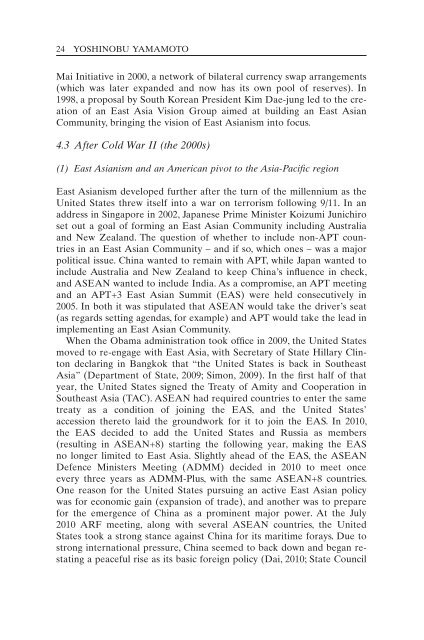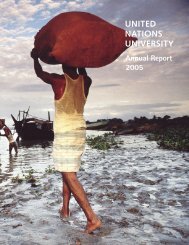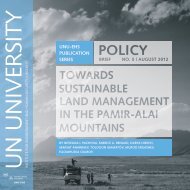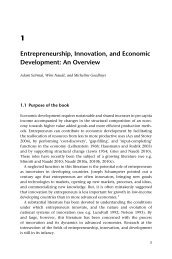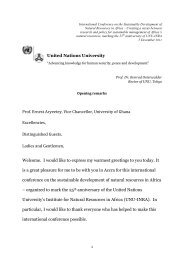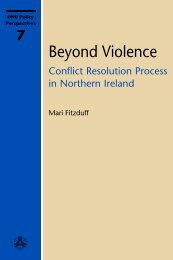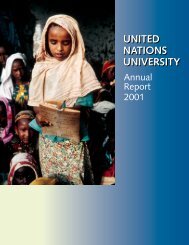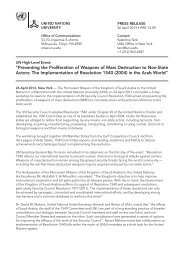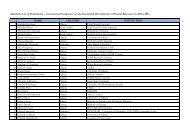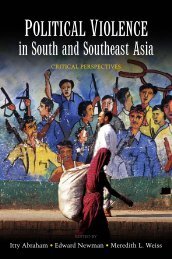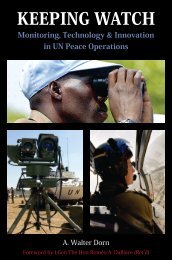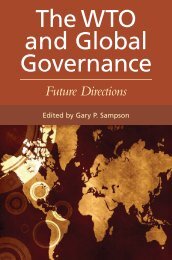Sample Chapter - United Nations University
Sample Chapter - United Nations University
Sample Chapter - United Nations University
You also want an ePaper? Increase the reach of your titles
YUMPU automatically turns print PDFs into web optimized ePapers that Google loves.
24 Yoshinobu Yamamoto<br />
Mai Initiative in 2000, a network of bilateral currency swap arrangements<br />
(which was later expanded and now has its own pool of reserves). In<br />
1998, a proposal by South Korean President Kim Dae-jung led to the creation<br />
of an East Asia Vision Group aimed at building an East Asian<br />
Community, bringing the vision of East Asianism into focus.<br />
4.3 After Cold War II (the 2000s)<br />
(1) East Asianism and an American pivot to the Asia-Pacific region<br />
East Asianism developed further after the turn of the millennium as the<br />
<strong>United</strong> States threw itself into a war on terrorism following 9/11. In an<br />
address in Singapore in 2002, Japanese Prime Minister Koizumi Junichiro<br />
set out a goal of forming an East Asian Community including Australia<br />
and New Zealand. The question of whether to include non-APT countries<br />
in an East Asian Community – and if so, which ones – was a major<br />
political issue. China wanted to remain with APT, while Japan wanted to<br />
include Australia and New Zealand to keep China’s influence in check,<br />
and ASEAN wanted to include India. As a compromise, an APT meeting<br />
and an APT+3 East Asian Summit (EAS) were held consecutively in<br />
2005. In both it was stipulated that ASEAN would take the driver’s seat<br />
(as regards setting agendas, for example) and APT would take the lead in<br />
implementing an East Asian Community.<br />
When the Obama administration took office in 2009, the <strong>United</strong> States<br />
moved to re-engage with East Asia, with Secretary of State Hillary Clinton<br />
declaring in Bangkok that “the <strong>United</strong> States is back in Southeast<br />
Asia” (Department of State, 2009; Simon, 2009). In the first half of that<br />
year, the <strong>United</strong> States signed the Treaty of Amity and Cooperation in<br />
Southeast Asia (TAC). ASEAN had required countries to enter the same<br />
treaty as a condition of joining the EAS, and the <strong>United</strong> States’<br />
accession thereto laid the groundwork for it to join the EAS. In 2010,<br />
the EAS decided to add the <strong>United</strong> States and Russia as members<br />
(resulting in ASEAN+8) starting the following year, making the EAS<br />
no longer limited to East Asia. Slightly ahead of the EAS, the ASEAN<br />
Defence Ministers Meeting (ADMM) decided in 2010 to meet once<br />
every three years as ADMM-Plus, with the same ASEAN+8 countries.<br />
One reason for the <strong>United</strong> States pursuing an active East Asian policy<br />
was for economic gain (expansion of trade), and another was to prepare<br />
for the emergence of China as a prominent major power. At the July<br />
2010 ARF meeting, along with several ASEAN countries, the <strong>United</strong><br />
States took a strong stance against China for its maritime forays. Due to<br />
strong international pressure, China seemed to back down and began restating<br />
a peaceful rise as its basic foreign policy (Dai, 2010; State Council


